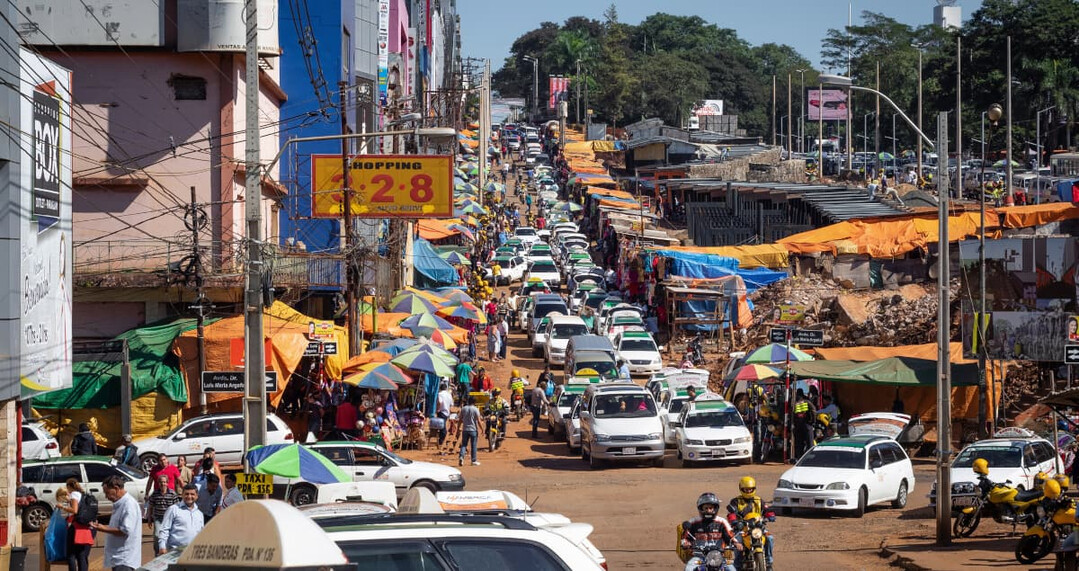
In contrast to the cautious outlook of international economic experts, the Central Bank of Paraguay (BCP) has garnered attention by raising its 2025 Gross Domestic Product (GDP) growth forecast from the previous 3.8% to 4%, even amidst escalating geopolitical tensions and the threat of a potential trade war. Carlos Carvallo, President of the BCP, emphasized that the upward revision of the growth forecast is due to unexpectedly positive economic indicators across various sectors, excluding agriculture. He particularly highlighted the robust overall economic performance despite the decrease in soybean production caused by drought.
President Carvallo projected that Paraguay's stable macroeconomic environment and neutral monetary and fiscal policies, aligned with the Fiscal Responsibility Law that maintains the GDP deficit limit at 1.5%, would effectively mitigate the indirect impacts of disruptions in the global trade order. However, the results of the Economic Expectations Survey (EVE) conducted by the BCP presented a somewhat different, more cautious stance compared to the central bank's optimistic forecast.
While most international organizations maintain a prudent growth outlook due to geopolitical uncertainties and the potential for a global economic slowdown, the Central Bank of Paraguay's upward revision of its growth forecast is considered a rather unexpected move. President Carvallo explained that this adjustment is based on recently obtained leading indicators, suggesting that the dynamism of economic activity is showing a much more positive trend than initially anticipated.
"We have obtained information that some leading indicators considered in the economic outlook are showing much higher levels than the December forecast," stated President Carvallo. "Therefore, despite the international situation, all the evidence to date suggests that even with a conservative assessment, 4% growth this year is entirely possible."
Regarding the direct impact that a trade war or tariff barriers could have on Paraguay, President Carvallo anticipates it to be very low. "The impact is likely to be more indirect," he added.
Mentioning that tariff issues were a major concern at the International Monetary Fund (IMF) and World Bank (WB) annual meetings last month, President Carvallo explained that countries were advised to prioritize macroeconomic stability. In this context, he emphasized that Paraguay is responding smoothly through its neutral monetary policy and fiscal policy that adheres to the 1.5% GDP deficit limit stipulated in the Fiscal Responsibility Law.
However, the results of the BCP's Economic Expectations Survey (EVE) presented a somewhat pessimistic scenario. The survey still predicted higher inflation and lower economic growth this year amidst a volatile global environment. Experts forecasted a GDP growth rate of 3.8% for both 2025 and 2026, lower than last year's 4.2%, and inflation was expected to reach 4.0%, surpassing both the BCP's forecast of 3.8% and this year's target of 3.5%.
This clear divergence in growth forecasts between the Central Bank of Paraguay and economic experts can be interpreted as reflecting the current uncertainties in the global economy. Escalating geopolitical tensions and the strengthening protectionist movements of major countries can have direct and indirect impacts on the economies of highly externally dependent nations like Paraguay. In particular, changes in the economic conditions of major trading partners and instability in global supply chains can act as negative factors for Paraguay's export and investment environment.
Nevertheless, the Central Bank of Paraguay's optimistic outlook seems to be rooted in confidence in the robust domestic market and the government's ability to manage macroeconomic stability. Furthermore, it reflects the expectation that positive growth momentum in other industrial sectors can drive overall economic growth despite the temporary slowdown in the agricultural sector. The Paraguayan government is focusing on attracting foreign investment and diversifying industries to strengthen the economy's resilience to external shocks, and it remains to be seen whether these efforts will have a positive impact on future economic growth.
However, as experts worry, if global economic uncertainty intensifies and a trade war materializes, the Paraguayan economy could also face unexpected difficulties. In particular, fluctuations in the prices of Paraguay's main export commodities, agricultural products, and the deterioration of economic conditions in its trading partners are pointed out as potential risks that could hinder Paraguay's economic growth. Therefore, the Paraguayan government needs to closely monitor changes in the external economic environment and continue its multifaceted policy efforts to ensure economic stability.
In conclusion, the Central Bank of Paraguay's upward revision of the 2025 GDP growth forecast can be seen as a reflection of the current positive trends in the Paraguayan economy and the government's policy confidence. However, given the still high level of uncertainty in the global economy, the cautious outlook of experts cannot be overlooked. Whether the Paraguayan economy will continue its growth trajectory as predicted by the central bank or face external shocks as experts fear will be confirmed through future economic indicators and changes in the global economic situation.
[Copyright (c) Global Economic Times. All Rights Reserved.]






























